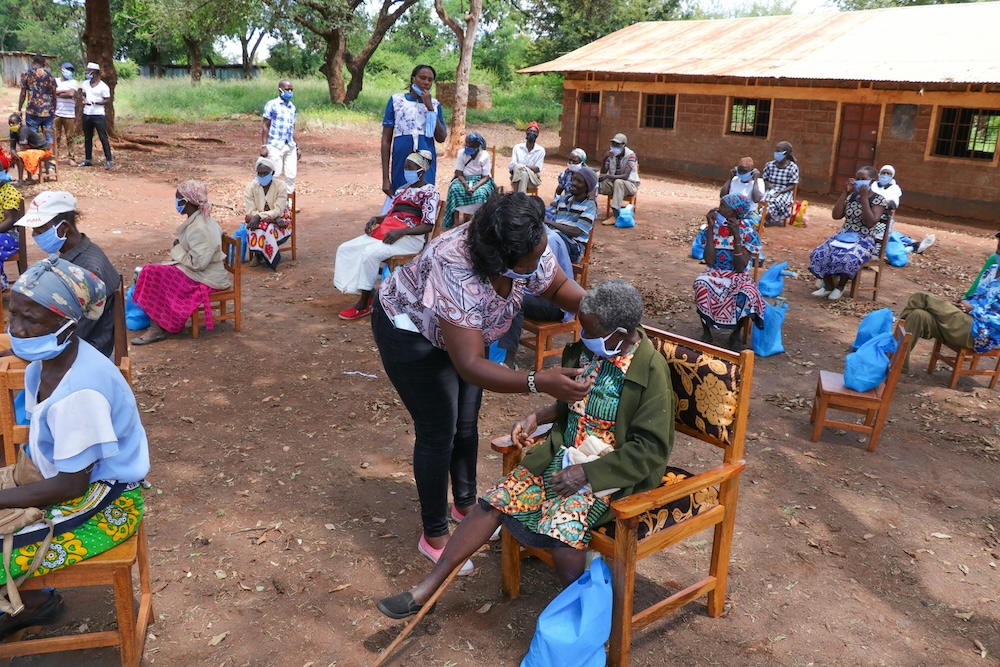Abstract
The advancement in technology, through the use of AI, has exacerbated inequalities in social welfare targeting in developing countries. Thus, this research examines how AI can be leveraged for an effective targeting mechanism in Nigeria, specifically the participatory frameworks that could align algorithmic design with grassroots equity demands, given its unique contextual issues in the form of fraud, persistent exclusion errors, and inefficiencies in beneficiary selection, using case studies from Kenya and South Africa. While addressing issues related to ethical considerations, infrastructural gap, and data availability, Kenya’s Huduma Namba (digital ID system) and South Africa’s South African Social Security Agency’s (SASSA) Social Relief of Distress (SRD) grant (algorithm means-testing) identify significant opportunities, such as biometric verification for reduced leakage and predictive analytics for poverty mapping, by examining current AI-driven welfare systems and their applicability to the Nigerian context. Methodologically, this paper relies on comparative case studies, secondary data analysis, and expert opinions to propose a framework for how AI can be leveraged for an effective targeting mechanism in Nigeria. Key findings indicate that although the use of AI can address inefficiencies in Nigeria’s social welfare, its adoption requires ethical safeguards, robust digital infrastructure and inclusive design to mitigate marginalisation. This study provides policy recommendations for Nigeria’s National Social Register (NSR) and contributes to the discussion on AI governance in low-resource settings. Specifically, this research examines AI as a subject of study, emphasising a more multi- and interdisciplinary perspective from public policy, computer science, development economics, information technology management, and data science.
Keywords:Social welfare, artificial intelligence, Nigeria, exclusion, digital identity
Introduction
Social welfare programmes in Nigeria, including the National Cash Transfer Programme (NCTP) implemented by the National Social Safety Nets Coordinating Office (NASSCO), deal with challenges like the exclusion of vulnerable groups, ghost or fraudulent beneficiaries, and manual verification delays (World Bank 2023). AI provides the possibility of addressing these issues through the use of biometric IDs, predictive poverty mapping, and automated eligibility checks. But its use in low-resource settings is inadequate due to the lack of robust digital infrastructure. This paper assesses lessons for Nigeria by examining how Kenya and South Africa integrated AI into their social welfare system. While Kenya’s Huduma Namba employs biometric ID to ensure effective and efficient public service delivery, South Africa’s SASSA SRD grant leverages AI-driven cross-checks to target relief. However, exclusion errors, data privacy, and algorithm bias were the main issues with both systems.
Artificial intelligence (AI) has two sides to its integration into social welfare systems. It raises important operational and ethical concerns, while also potentially increasing efficiency. Though sometimes at the cost of overall accuracy. Studies highlight how the integration of AI into social
welfare systems can improve the accuracy of welfare targeting, as evidenced by conditional cash transfer (CCT) programmes where adjustments in algorithms reduce exclusion errors (Noriega et. al. 2018). However, there are also concerns about AI-driven bias and surveillance, with evidence suggesting that automated systems could perpetuate historical marginalisation trends, especially in fraud detection (Zajko 2023). Although regulatory frameworks like the European Union’s AI Act attempt to address these concerns, they are criticised for possible flaws that permit tech companies to self-regulate, putting vulnerable populations at the risk of inadequate protections (Akhmedjonov, 2023).
Methodology
The research question is within the intersection of the effectiveness and adaptability of AI, asking what lessons Nigeria can derive from the implementation of Kenya’s Huduma Namba (digital ID system) and South Africa’s South African Social Security Agency’s (SASSA) Social Relief of Distress (SRD) grant (algorithm means-testing). This paper relies on comparative case studies, secondary data analysis and expert opinions to propose a participatory framework for how AI can be leveraged for an effective targeting mechanism in Nigeria. The focus of this study is on policy lessons. Key findings indicate that although the use of AI can address inefficiencies in Nigeria’s social welfare, its adoption requires ethical safeguards, robust digital infrastructure, and inclusive design to mitigate marginalisation.
Ethical Considerations
1. Data privacy and consent: There exists a need in Kenya’s Huduma Namba, though well-intentioned, for robust data protection measures and transparency (Allen and Zyl 2020). In the Nigerian context, privacy concerns have been raised by the Nigeria Data Protection Regulation (NDPR) about the national identification number (NIN) enrolment with mandatory linkage with SIM cards (National Information Technology Development Agency 2019).
2. Potential biases in AI systems or traditional methods: South Africa’s SASSA SRD grant excluded informal workers as a result of reliance on formal tax database for eligibility verification. There was also the issue of faulty eligibility verification, where 80% of rejections were as a result of misclassified financial status (Howson et. al. 2025).
3. Considerations for local context and cultural appropriateness: A 2021 study by the World Bank Identification for Development Initiative on gender barriers in Nigeria revealed that women had to seek permissions from fathers or husbands to leave the house, which hindered their ability to obtain a form of identification. Also, other social norms issues that were identified include unveiling for photographs, mixed gender spaces, and physical contact required to capture fingerprints (Hammer, Esquivel-Korsaik, and Pande 2021).
Findings
Kenya: Huduma Namba
Success
In addition to improving social welfare targeting, the system’s ability to provide exclusive monitoring capabilities, particularly at key locations like airports and border posts, was emphasised by the government. Huduma Namba was able to anticipate potential threats, respond quickly in those crucial moments, and dynamically adjust to changing security issues through the utilisation of AI (Nyakundi 2020; Huduma Namba Admin 2019).
Challenges
Bor and Koech (2023) noted that Amnesty International and Human Rights Watch, among other well-known international human rights organisations, pointed out the programme’s hidden dangers and emphasised the need for strict data protection protocols and transparency, no matter how well-intentioned the Huduma Namba is (Allen and Zyl 2020). The Numbian community in Kenya also raised serious concerns about exclusion and discrimination during the Huduma Namba registration, highlighting the possibility for inherent bias and misuse in such a broad programme (Kenya Human Rights Commission 2021).
South Africa: SASSA SDR Grant
Success
South Africa’s SASSA SRD grant has been an effective tool in alleviating poverty through the increase in income expenditure and purchasing power (Ubisi 2024). Through the grant, the government reached over 30 million South Africans with cash-based relief measures (Gronbach et. al. 2022).
Challenges
South Africa’s SASSA SRD grant excluded informal workers as a result of reliance on formal tax database for eligibility verification. There was also the issue of faulty eligibility verification, where 80% of rejections were as a result of misclassified financial status (Howson et. al. 2025). Another main issue was that of exclusion error, which occurred as a result of barriers to accurate verification of eligibility via proxy means testing, application, and receiving payments having been approved. Howson et al. (2025) further revealed that people who experienced existing forms of marginalisation, including financial exclusion, spatial inequality, digital exclusion, lack of access to identification documents, gender inequality, and immigration status, were most vulnerable to erroneous exclusion from the grant.
Interdisciplinary Implications
This research bridges disciplinary boundaries by bringing together economics (social welfare) with computer science (AI). Some of the potential implications in the Nigerian context are the design of a hybrid AI-humane system, where AI is used for initial screening and committees in the community are responsible for the final verification, which addresses Kenya’s exclusion error. Also, dynamic eligibility models can be developed to adjust welfare access based on real-time shocks like floods; this was useful in South Africa’s COVID-19 response and is still relevant.
Evidence from Kenya and South Africa has revealed that AI welfare systems fail when imposed without participation. Nigeria can learn from this by starting with grassroots equity demands and building algorithms around them. Nigeria can also ensure an inclusive and sustainable integration of AI in social welfare targeting by institutionalising transparent rules, community panels and a hybrid form of verification.
This study is relevant in the educational setting as this discussion could lead to the design of a robust curriculum on AI ethics for public administrators. Policy makers are also well-informed about the need for comprehensive AI governance frameworks. Furthermore, communities are better equipped to take proactive steps through the demand for transparency in algorithm decisions, for example, explanations for rejections through SMS.
Conclusion
This research finds that while AI can enhance efficiency in social welfare targeting, its implementation requires careful design to avoid exclusion. The other side is the potential risks where both systems exclude vulnerable groups as a result of data accessibility and quality, digital divide, or algorithmic biases.
The limitation of this study stems from the reliance on secondary data. Primary field testing can be useful to provide further insights into future research. The practical recommendation for the government is to ensure an inclusive data protection act that comprises welfare algorithm audits. In the case of the research findings by the World Bank Identification for Development Initiative on gender barriers in Nigeria, highlighted earlier, the National Identity Management Commission can accelerate gender-sensitive ID enrolment in collaboration with the local governments. Finally, it is important that AI systems are monitored for fairness.
Acknowledgements
I would like to thank the Research Round team for putting together this engaging and insightful fellowship. Many thanks to my mentors for their support and feedback during the fellowship: Dr Samuel Segun and Dr Ridwan Oloyede. Finally, I would like to appreciate first my co-fellow and navigator in the Social Welfare and Policy sub-group: Habeeb Tajudeen and Shukurat Bello, and second, the entire cohort of fellows and navigators of the fellowship for the insightful discussions.
References
Allen, Karen, and Izak van Zyl. Who’s Watching Who? Biometric Surveillance in Kenya and South Africa. Pretoria: ENACT, 2020. https://enact-africa.s3.amazonaws.com/site/uploads/2020-11-11- biometrics-research-paper.pdf
Akhmedjonov, Akmaljon. The Implication of AI in Social Welfare Systems: Potential Risks and Prevention Measures. 2023. https://www.etd.ceu.edu/2023/akhmedjonov_akmaljon.pdf
Bor, Sherry, and Nicole Cheptoo Koech. “Balancing Human Rights and the Use of Artificial Intelligence in Border Security in Africa.” Journal of Intellectual Property and Information Technology Law (JIPIT) 3, no. 1 (2023): 77–122. https://doi.org/10.52907/jipit.v3i1.260.
Gronbach, Lena, Jeremy Seekings, and Vayda Megannon. Social Protection in the COVID-19 Pandemic: Lessons from South Africa. CGD Policy Paper 252. Washington, DC: Center for Global Development, 2022. https://www.cgdev.org/sites/default/files/social-protection-covid-19- pandemic-lessons-south-africa.pdf
Hanmer, Lucia C., Victoria Esquivel-Korsiak, and Rohini P. Pande. Barriers to the Inclusion of Women and Marginalized Groups in Nigeria’s ID System: Findings and Solutions from an In Depth Qualitative Study. Identification for Development. Washington, D.C.: World Bank Group, 2021. http://documents.worldbank.org/curated/en/881401618990982108
Howson, Kelle, Siyanda Baduza, Thato Setambule, and Thobani Khumalo. Systemic Exclusion from a South African Social Assistance Transfer: Drivers, Impacts and Who Is Most at Risk. Institute of Economic Justice (IEJ) Research Paper No. 340, 2025. https://iej.org.za/wp content/uploads/2025/03/South-Africa-SRD-exclusions_WEB.pdf
Huduma Namba Admin. Huduma Namba and Our National Security Strategy. 2019.
Kenya Human Rights Commission. “Consortium Applauds Court Judgement Declaring Huduma Cards Illegal; Calls for Further Reforms.” Citizenship Rights in Africa Initiative, October 18, 2021. https://citizenshiprightsafrica.org/kenya-consortium-applauds-court-judgement-declaring huduma-cards-illegal-calls-for-further-reforms/
National Information Technology Development Agency. 2019. Nigeria Data Protection Regulation (NDPR) Report. https://nitda.gov.ng/wp content/uploads/2020/11/NigeriaDataProtectionRegulation11.pdf
Noriega, Alejandro, Bernardo Garcia-Bulle, Luis Tejerina, and Alex Pentland. Algorithmic Fairness and Efficiency in Targeting Social Welfare Programs at Scale. 2018. https://data.bloomberglp.com/company/sites/2/2018/09/algorithm-fairness-efficiency_.pdf
Nyakundi, F. Huduma Namba: Kenya’s Transformation into an Informational State. Master’s thesis, University of Washington, 2020. https://digital.lib.washington.edu/server/api/core/bitstreams/1de6a6a9-dd35-42ce-b3fa 8ec68b6c4935/content
Ubisi, Tricxy Maureen. The Impact of SASSA Social Relief of Distress Grant (SRD 350) As a Measure for Poverty Alleviation. African Journal of Development Studies, Vol. 14(2) 2024. https://journals.co.za/doi/epdf/10.31920/2634-3649/2024/v14n2a8
World Bank. Consolidated Recommendations – Nigeria Social Protection Fiscal Space Study. 2023.
Zajko, Mike. 2023. Automated Government Benefits and Welfare Surveillance. Surveillance & Society 21 (1): 52–65. https://ojs.library.queensu.ca/index.php/surveillance-and society/article/view/16107












